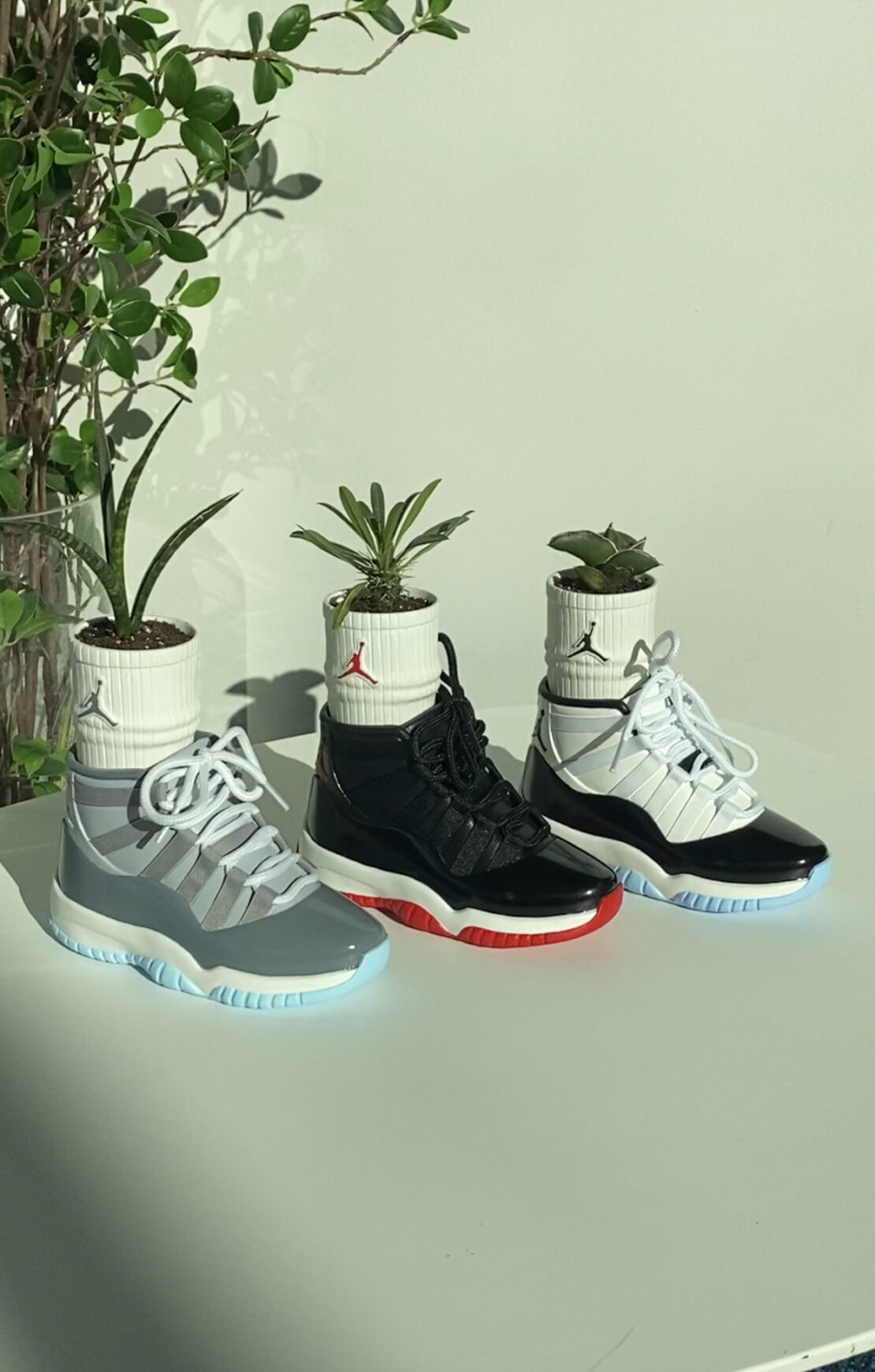When in the pursuit of happiness, you are often told that following your passion will lead to a destination that is densely populated with prosperity and content. However, such advice isn’t exactly as sound as it may seem. In Cal Newport’s book So Good, They Can’t Ignore You…, the author points out that success and doing what you love isn’t exactly linear and while the catalyst for success may occasionally draw reference from passion, the true source that keeps on giving–that keeps evolving–is developed skill and sometimes innate talent.
Claiming dual citizenship, artist Shawn Farrow has employed all three, using passion, skill and talent to craft a series of functional sculptures that draw inspiration from one of the most iconic shoes ever created.
“The most challenging part of my journey has been learning patience. In the beginning, I wanted a flawless sculpture without possessing the skills to do so. I didn’t take into account that I was brand new to sculpting and it takes years to perfect a craft. I took an approach where the goal of every project was to do something new and over time I would achieve a standard I would be happy with.”
– Shawn Farrow
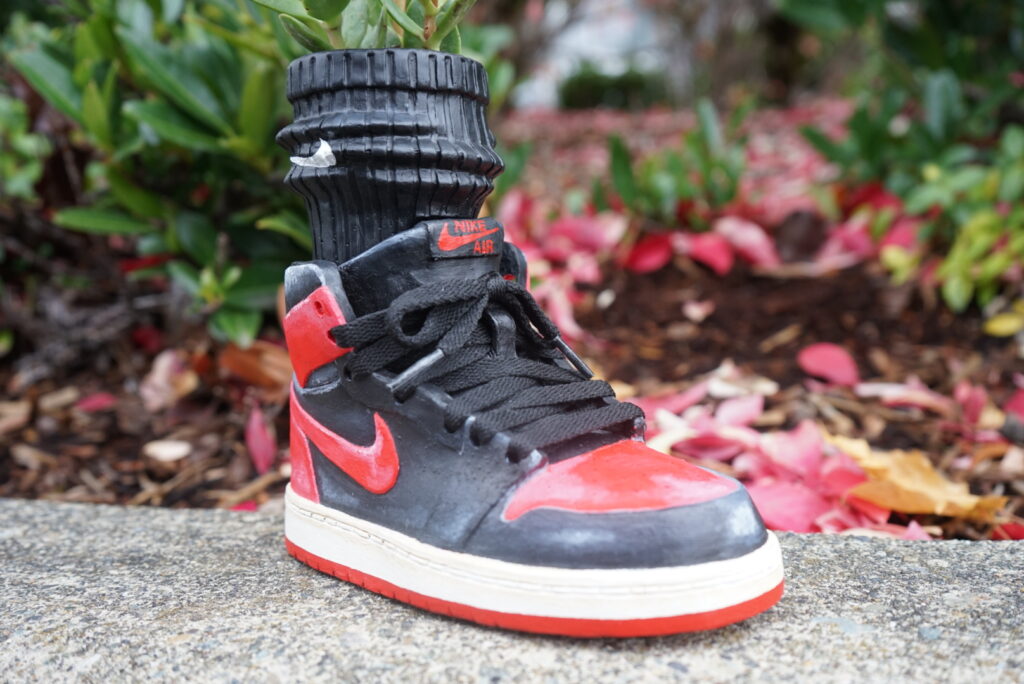
Much like the human beings who wear them, Jordans come in all shapes, sizes and silhouettes. Yet Farrow knows better than anyone else that most Jordan aficionados don’t respect anything released after the 17s–and that’s liberal being that the 15s and 16s were relative hits and misses and the 17s gained most of their appeal in retrospect. Now, these may seem like random numbers to the untrained foot but it doesn’t take a sneakerhead to appreciate the beauty of Farrow’s Air Jordan resin sculptures. Each pint size piece has an unrelenting cultural appeal that is all too familiar.
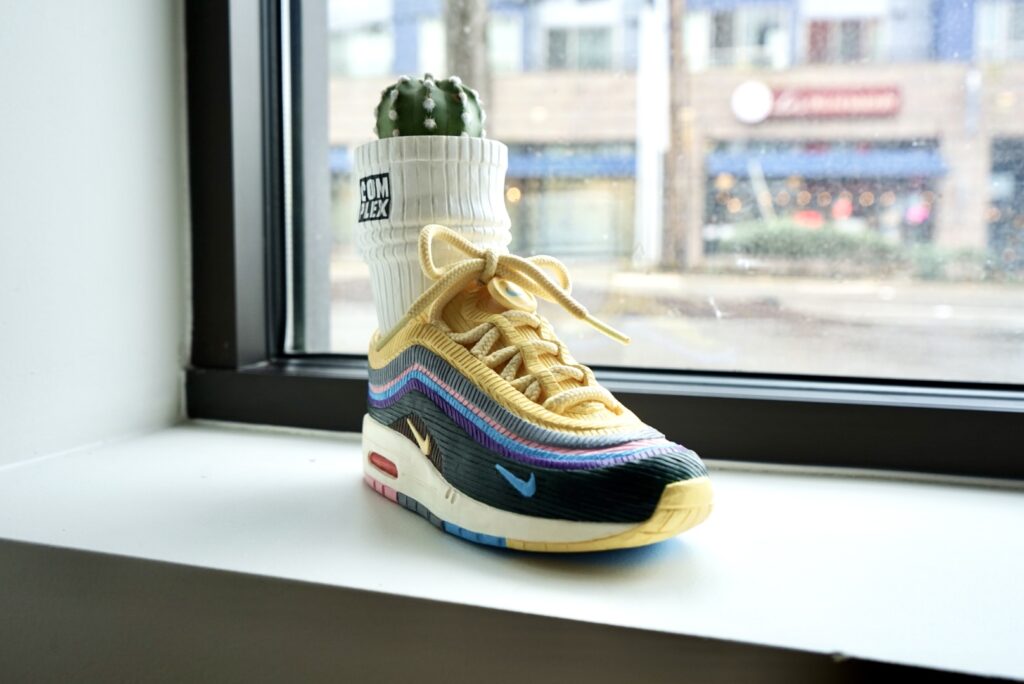
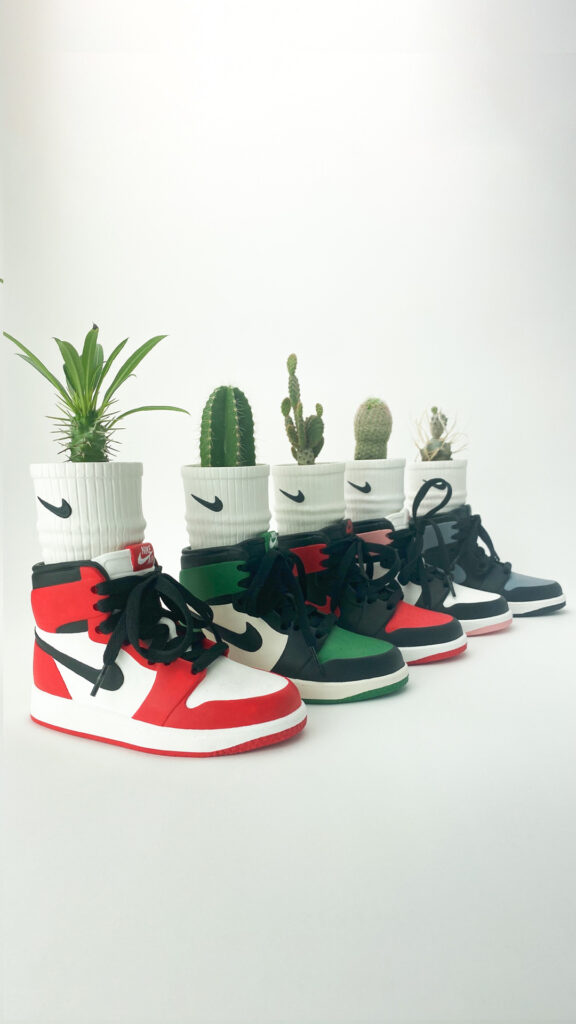
Although Farrow utilizes some highly accurate design features, he also incorporates certain subtleties that makes his work more than just replicas. At first, Farrow worked with clay. The sculptures were a little rough around the edges but their intentions were pure. It was apparent that Farrow had a deep affinity for sneakers and this was his special way of showing that. The now ever present sock planter had yet to make its debut, so the dirt was poured directly into the shoe which gave the sculpture a quaint and organic feel.
Eventually the sock was added and Farrow switched to resin but he still managed to maintain a signature charm. The slack in the sock, the snug but casually tied laces–they all make the work genuine and warm. After all, Farrow’s work is not just an ode to sneaker culture. It speaks to existential motif of growth and self expression.
We reached out to Farrow and took a moment dig a little deeper and walk in his shoes.
Let’s start from the beginning. What is your creative background? How did you become fond of sculpture?
“I’ve been creating for as long as I can remember. Growing up I did a lot of pencil drawing. I used to draw my favorite sport logos and players. As I got older I gained interest in graffiti and color pencils. In high school, I got introduced to acrylic paint and continued painting through college.
I started sculpting in 2018, a little after I got my first desk job as a software engineer. I didn’t have any decorations on my desk until I saw a coworker who had a toddler boot on her desk with a plant in it. Instead of buying toddler sneakers just for a plant, I decided to make one. It’s been a fulfilling journey to get where I am now. It took a lot of dedication and patience.”
Why sneakers? How did you end up choosing such an iconic subject?
“I’ve always had a love for sneakers because of sports. As a kid, one of my favorite parts of drawing athletes was making sure they had their signature sneakers on. My family didn’t have a lot of money so I wasn’t able to own any signature sneakers myself. I had to make the best of what I could get.”
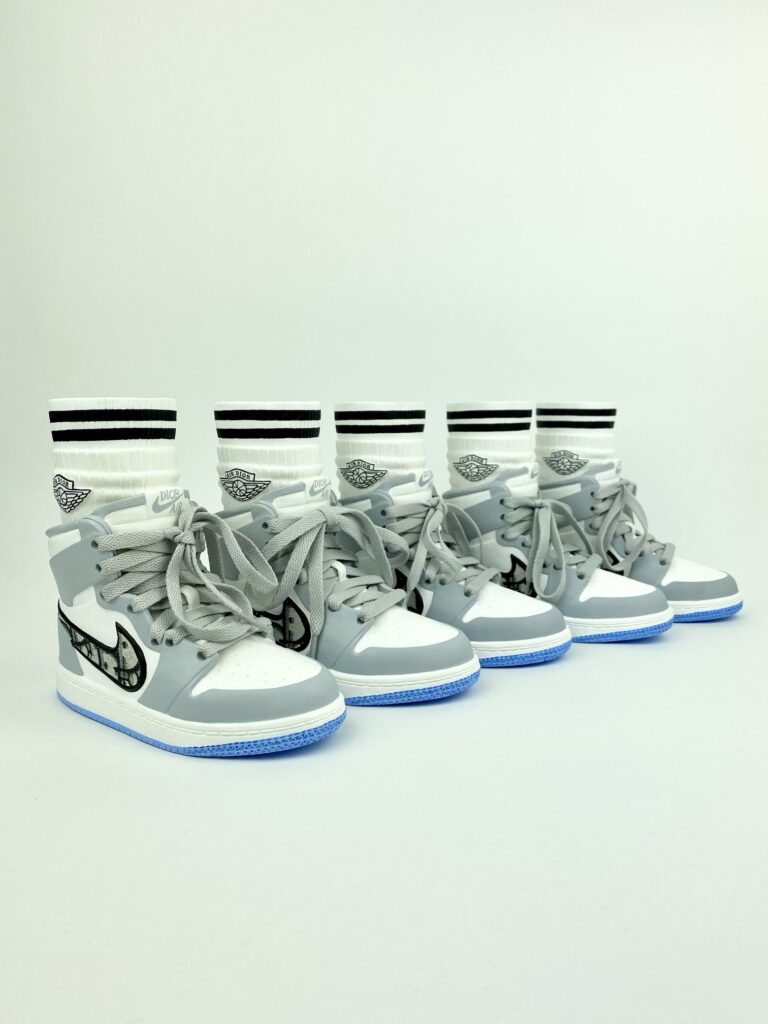
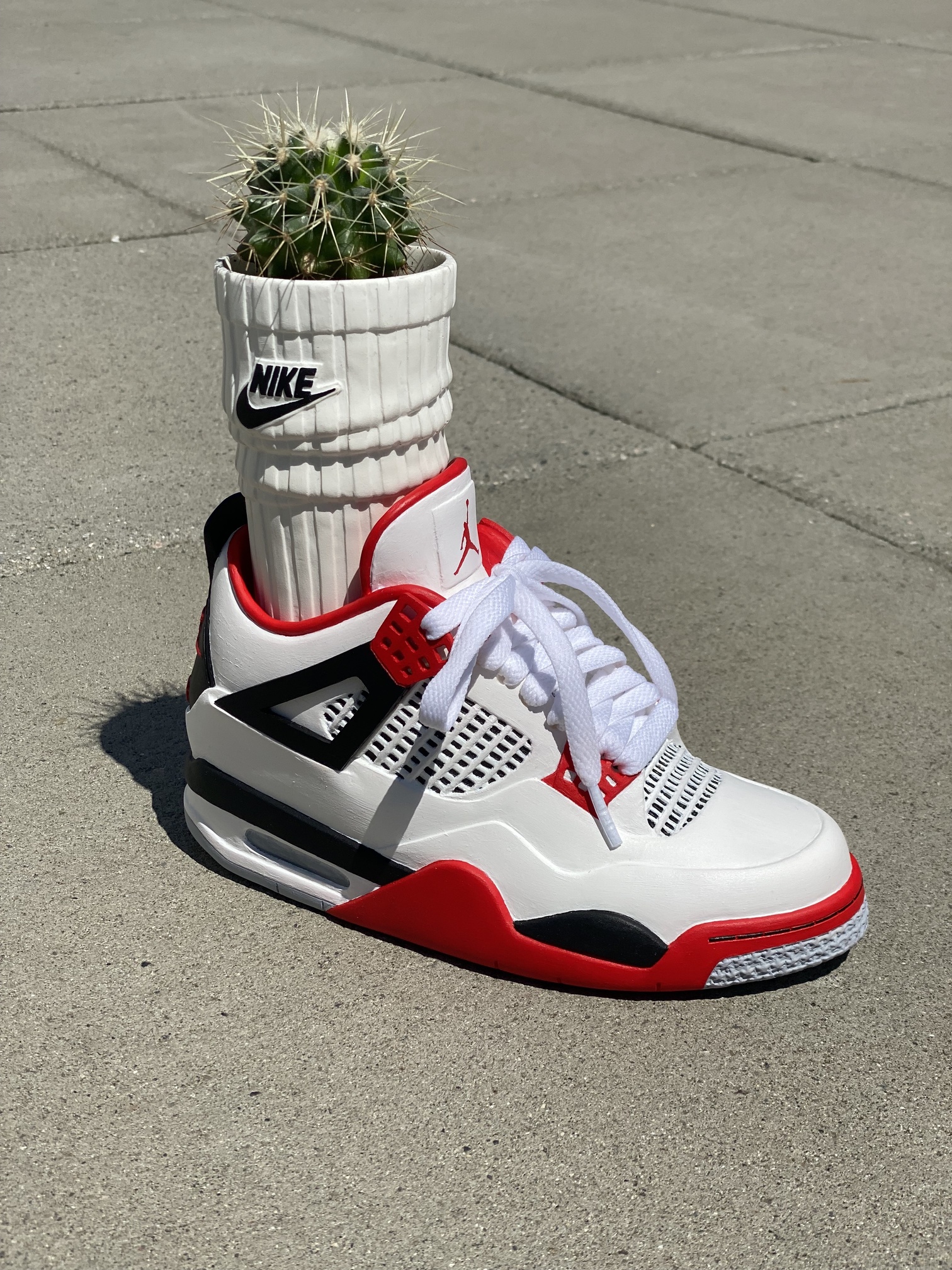
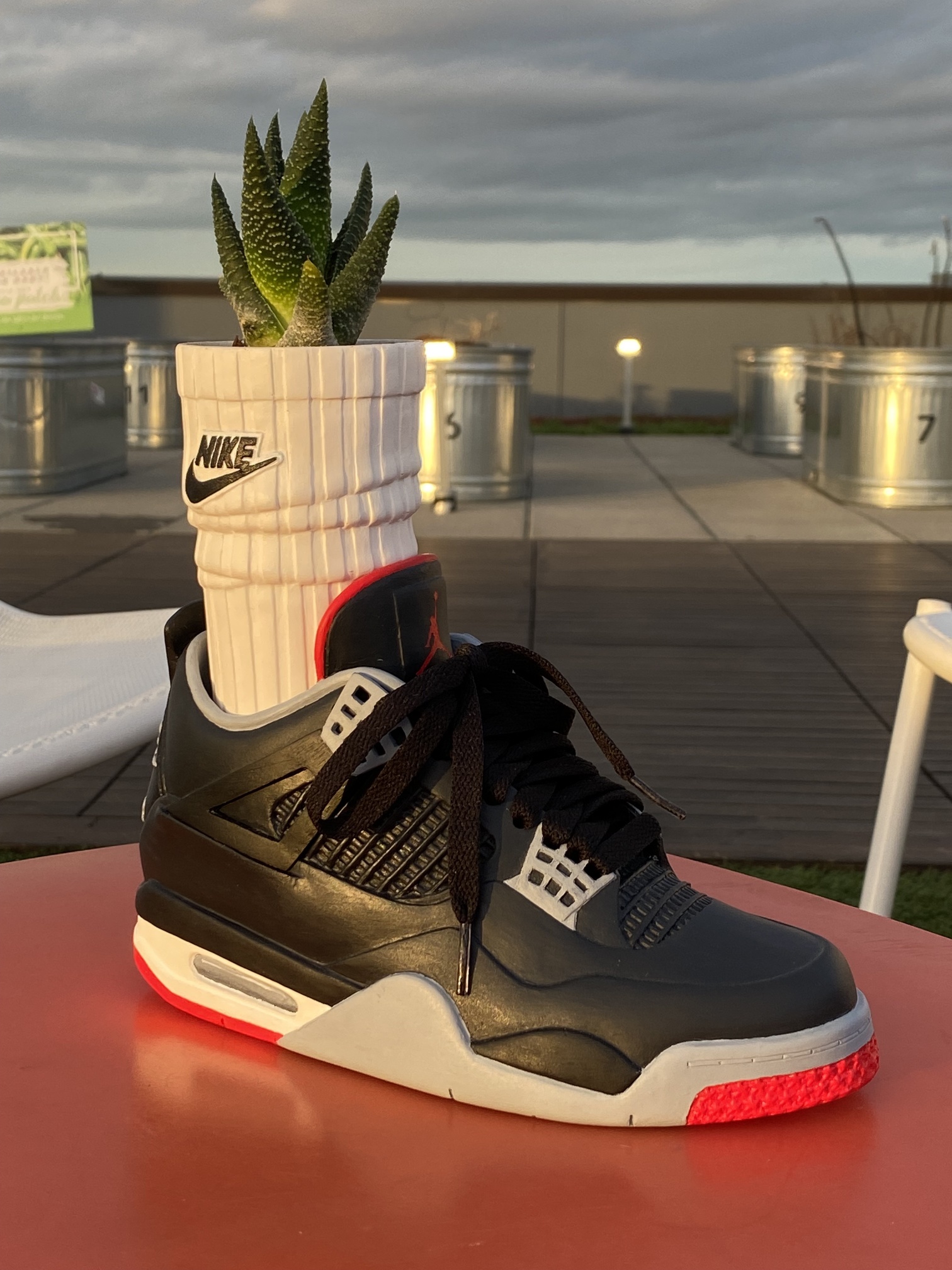
What are some of your favorite sneakers to craft?
“I like each project for different reasons but my top two favorites are the Jordan 11 and 3. They are my favorite silhouettes in general, along with the Jordan 4. The Jordan 11 project was one of the first times I felt substantial progress in my craft. I was making several Jordan 1s at the time, and although I was making them better and better, it was hard to gauge the progress because it was subtle. It also gave me a chance to imitate a new material with the patent leather. The Jordan 3 project is my best work to date. I like how I captured the shape of the sneaker and the elephant print presented an intricate challenge that tested my skills.”
You’ve come very far in your technique. What is the most difficult part of your process? Anything that took you some time to perfect or get just right?
“The most challenging part of my journey has been learning patience. In the beginning, I wanted a flawless sculpture without possessing the skills to do so. I didn’t take into account that I was brand new to sculpting and it takes years to perfect a craft. I took an approach where the goal of every project was to do something new and over time I would achieve a standard I would be happy with.
I’m still growing my skills across the board with my process. As I get better, my ideas get more complex and present new challenges to overcome. Up to this point, the hardest part was achieving a smooth finish with my resin castings. I ended up getting new equipment to aid in the mold making and casting processes which undoubtedly raised the quality of my art. A smooth finish increases my efficiency and allows me to focus on new ideas.”
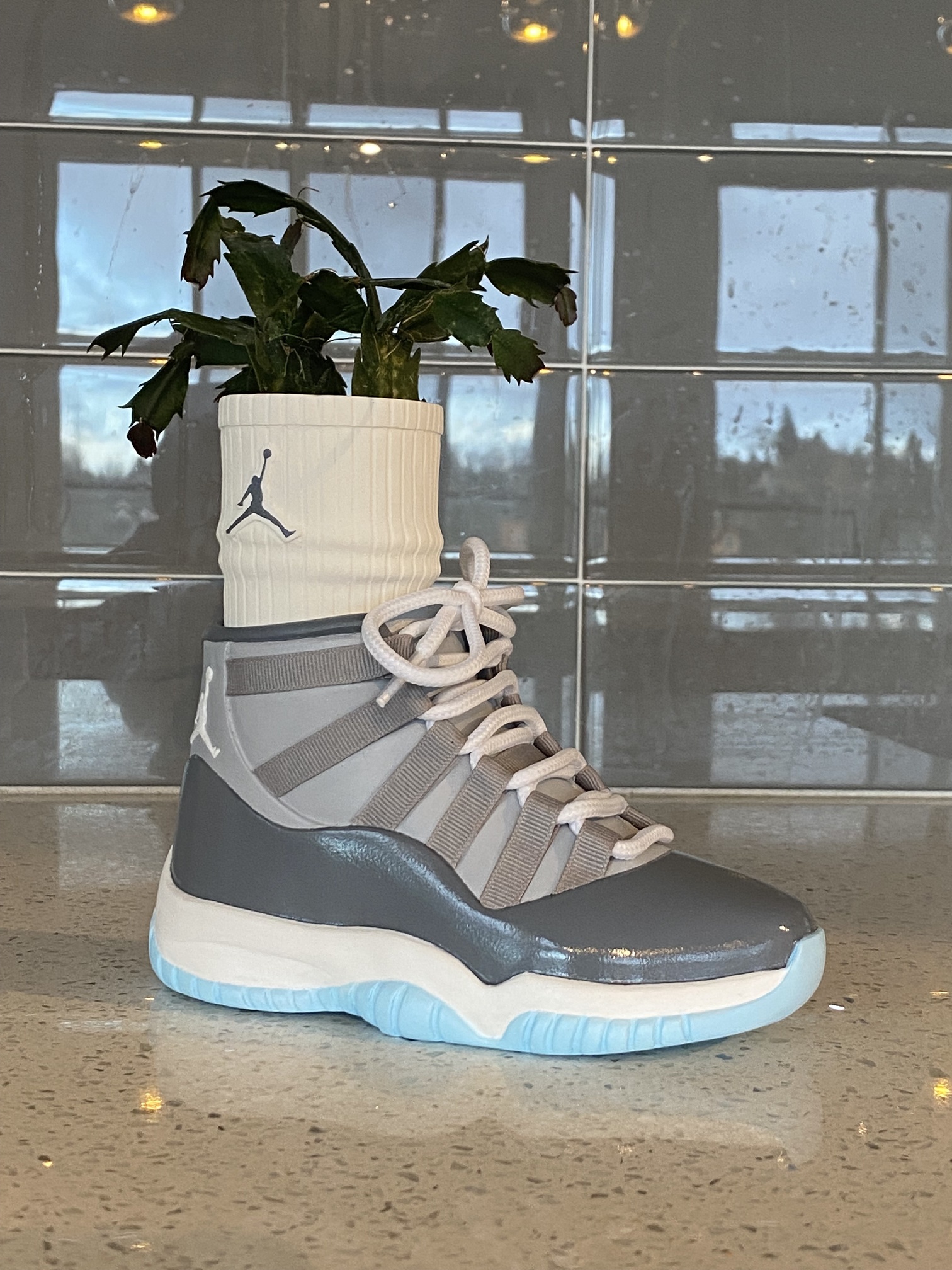
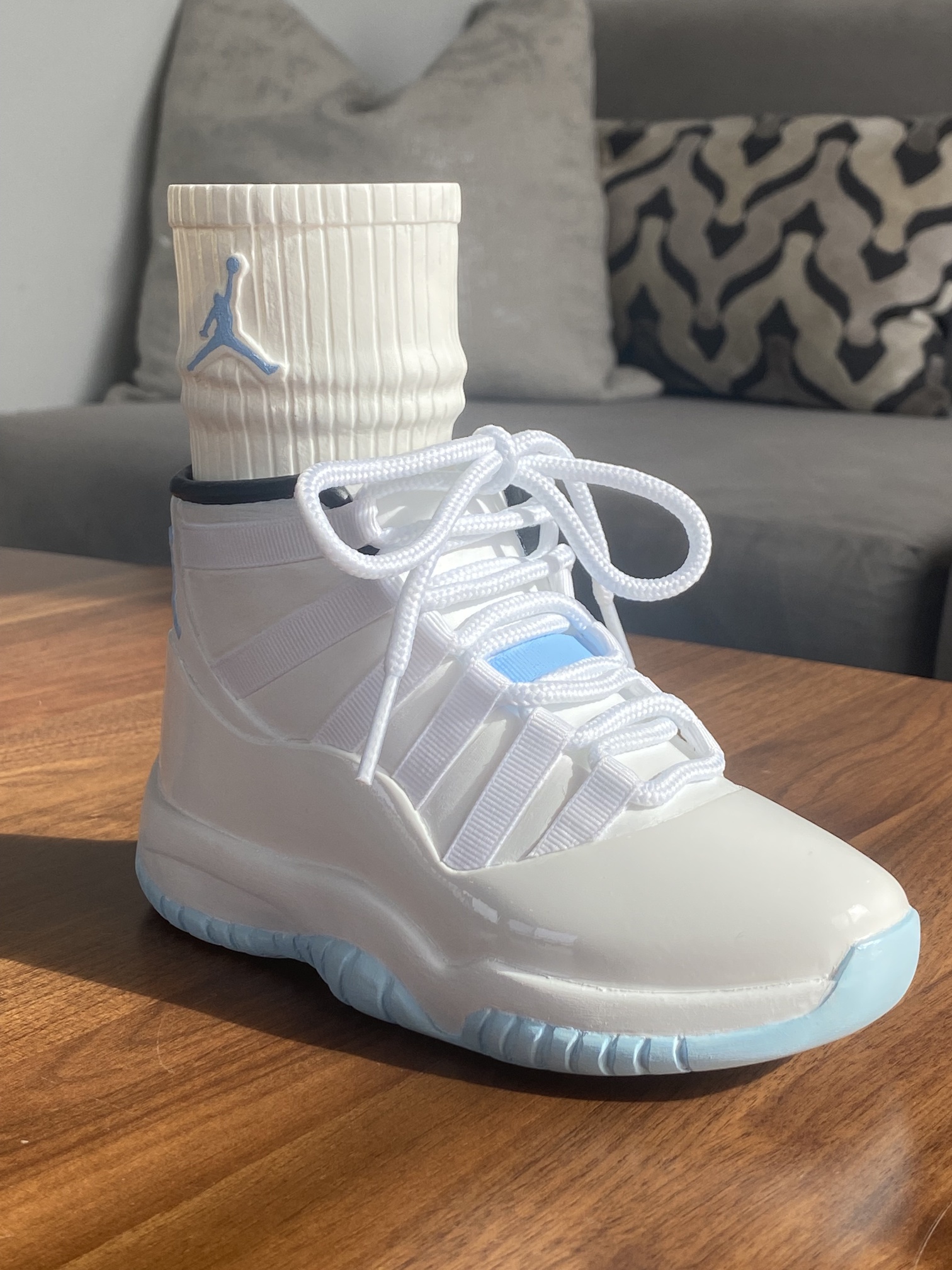
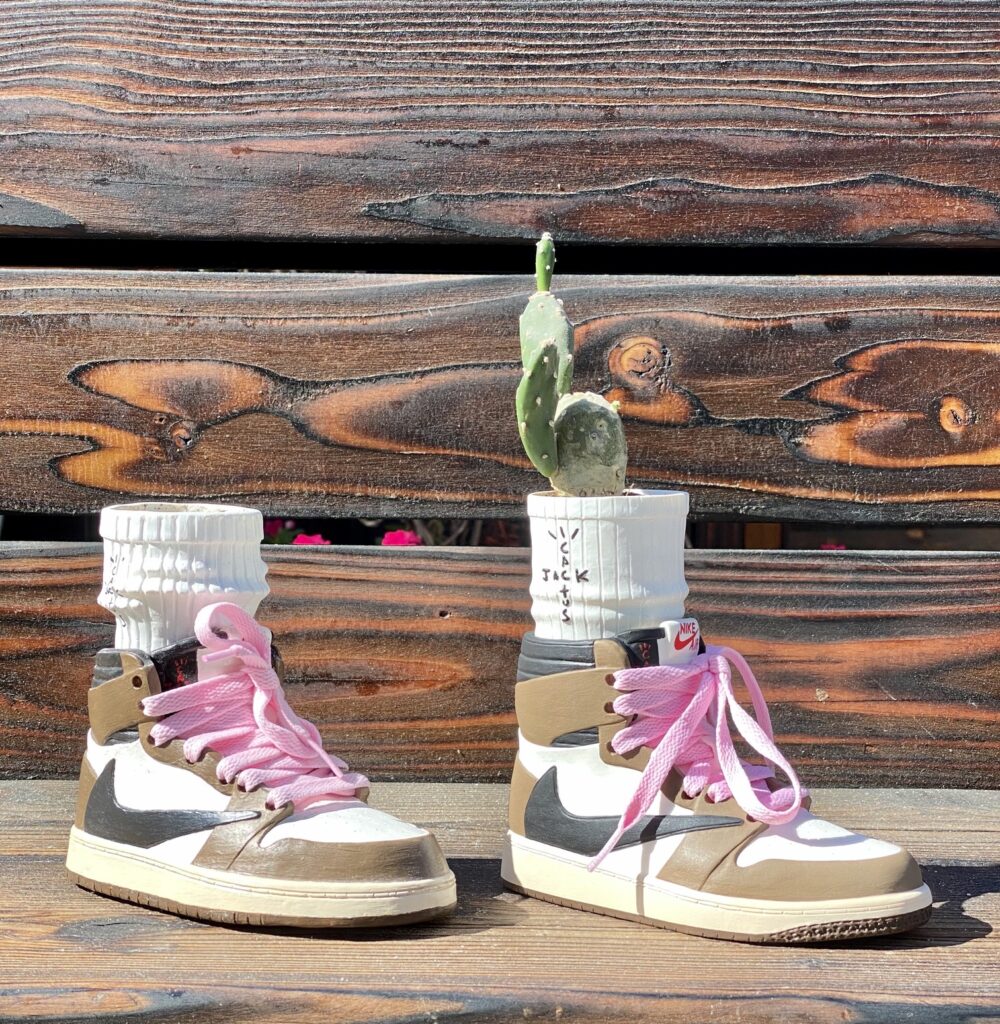
It looks like you gradually transitioned from clay to resin. Was there a reason for the switch?
“I switched to resin because sculpting takes me a significant amount of time. I wanted to see my sneakers in different color ways. Making a mold and casting with resin allowed me to sculpt once and get more out of that time.”
Why succulents? Ever consider other plants or flowers?
“I chose succulents and cacti for a couple reasons. First off, I never owned a plant until I started making sneakers. Succulents and cacti are easier to maintain and it gave me more leeway to keep them alive. The other reason was that my sneakers weren’t very big and I didn’t want something that would outgrow the shoe too quickly. Now, I make my sneakers and sock planters bigger. I’m looking forward to trying out different types of plants and flowers.”
What about other brands like Reebok or Adidas?
“I definitely want to make sneakers from other brands. There are so many cool sneakers that it’s hard to choose what to make next. I like to have the sneaker in hand when I’m sculpting for reference and since I pretty much only own Nikes and Jordans, that’s what I’ve made so far. I get feedback from my supporters on what sneakers they want to see and take that into account when choosing the next project. Stepping away from Nikes and Jordans could come as soon as my next project, or it could be a while.”
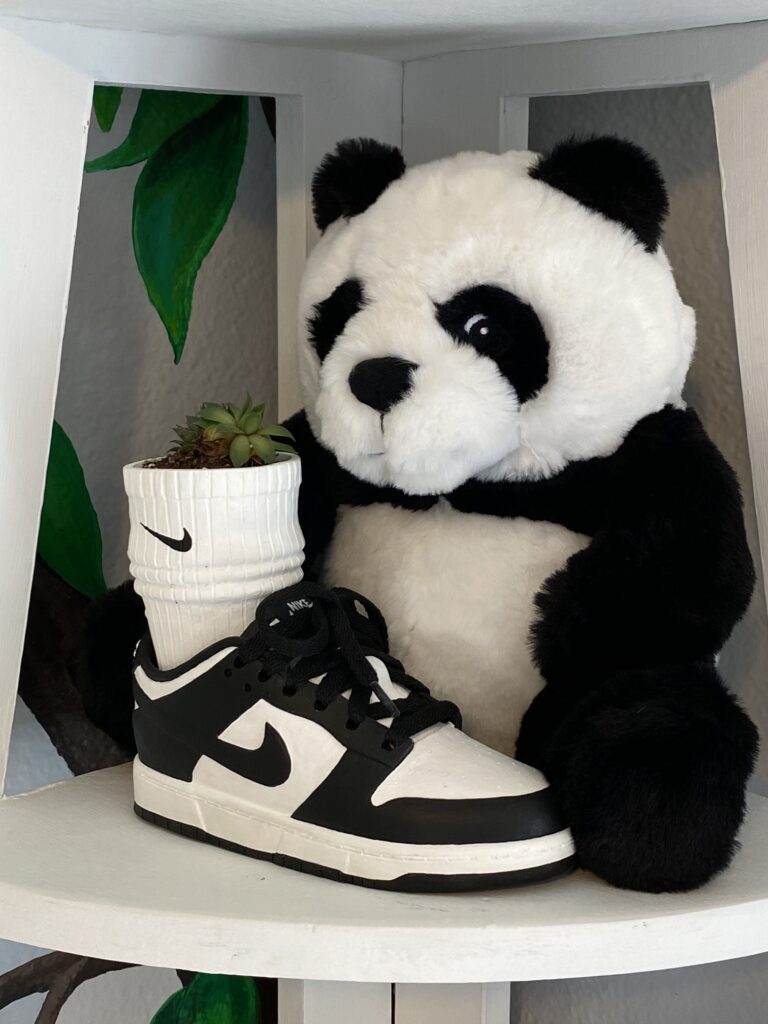
What’s next for Shawn Farrow? Anything projects or collaborations that we should keep an eye out for?
“My goal over the next year is to keep perfecting my craft and get my art in front of new audiences. I predominately share my work on Instagram, and I’m determined to get back into art shows because art should be experienced in person. I want to use my art as a vessel to connect with other artists and inspire others to create.
Over the next few projects I’m looking to add the element of movement to my art. The plants signify life and growth as humans in our favorite sneakers. Adding movement takes that to the next level as we are in this world growing as we move around and experience life. I have a couple ideas in mind that I think people will really enjoy.
Stay tuned.”
Want to keep up with Shawn Farrow’s latest?
Follow him on Instagram.
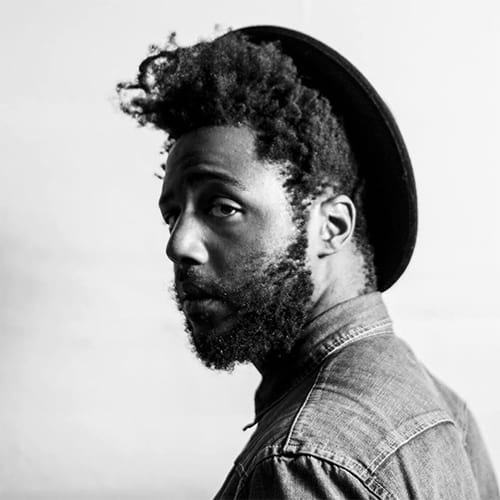
Akeem is our founder. A writer, poet, curator and profuse sweater, he is responsible for the curatorial direction and overall voice of Quiet Lunch. The Bronx native has read at venues such as the Nuyorican Poets Cafe, KGB Bar, Lovecraft and SHAG–with works published in Palabra Luminosas and LiVE MAG13. He has also curated solo and group exhibitions at numerous galleries in Chelsea, Harlem, Bushwick and Lower Manhattan.

